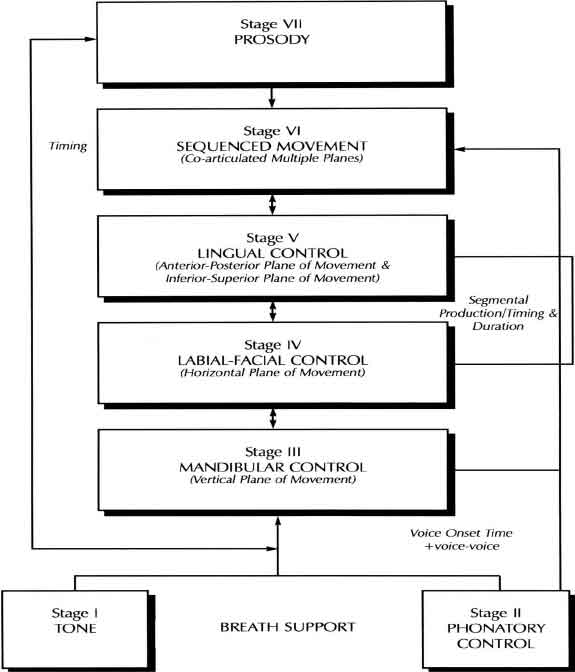
Why are Speech Movements Important?
You can discover the importance of speech movements by engaging in a simple procedure. Count aloud from one to ten. Did anything move? Now count aloud from one to ten without moving anything. Can it be done? You should have remained silent during this second task because no one can speak without moving. OMT is used in speech therapy to develop correct movements for oral speech. It is also used for feeding therapy.
What are the Proper Speech Movements?
In order to speak correctly, you must move the mouth (jaw, lips and tongue) in specific ways. Say, “Mmmm” and notice how your lips touch together. Now say, “Nnnn” and notice that your lips do not touch but that your tongue cleaves to the roof of your mouth. These two sounds (phonemes) are very similar. What makes them different is the way the mouth is positioned. Every speech sound is made with a specific jaw, lip and tongue position. The jaw can move up, down, left, right, forward, back and in rotation. The lips can pucker, round and retract. And the tongue can lift and lower its tip, sides, middle and back. It also can stretch forward and back for speech. Mature speech requires that the jaw, lips and tongue move maturely in all directions, and that they do so both independently and in coordination with one another. Literally, this is what oral-motor therapy is: the process of facilitating improved jaw, lip and tongue movements for speech.

How can our Speech Therapists help?
Speech is a series of stabilization and mobilization contours and actions. And as trained therapists, we can work with those contours and actions. Oral motor exercises emerge as powerful tools in the realm of speech and language development. These exercises, when administered by trained professionals, contribute significantly to strengthening orofacial muscles and improving coordination. While the benefits are profound, it’s essential to emphasize the importance of proper guidance from healthcare professionals to ensure exercises are tailored to individual needs. With a comprehensive assessment and targeted treatment plan, incorporating oral motor exercises can pave the way for enhanced speech and language abilities, ultimately empowering individuals to communicate with confidence and clarity.
